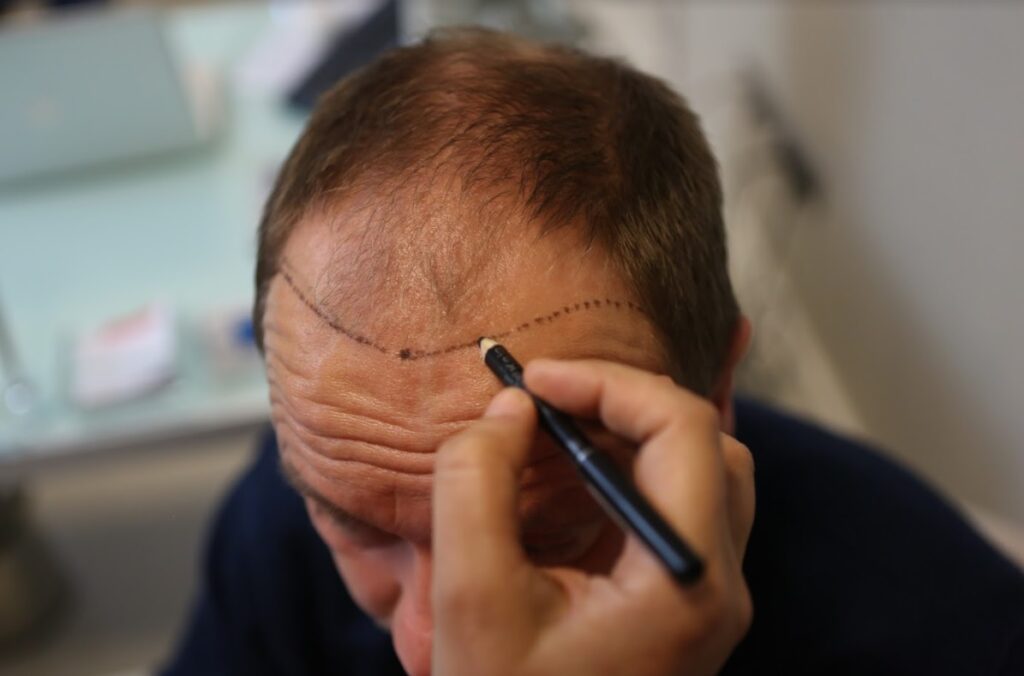Are you anxious over hair thinning at an early age? Maybe you’re looking more and more like folks with receding hairlines or completely shiny domes.
While hair loss isn’t a life-threatening issue, it does deal a number on your confidence.
Fortunately, hair transplantation has become a popular and effective solution over the years. It offers a way to restore your natural appearance and rebuild your self-esteem.
This blog will show you what to expect when getting a surgical transplant.
Is A Hair Transplant For You?
Some men and women use non-surgical treatments like finasteride and minoxidil to grow back bouncy hair. Others get injections of autologous platelet-rich plasma or undergo radiofrequency microneedling.
When non-surgical methods don’t work, surgical ones have become more reliable these days. Those who got a professionally done FUE hair transplant can attest to how far these have come from the old, often gnarly results they produce.
Still, only some people experiencing hair loss are suitable candidates for hair transplantation. Various factors can affect their viability, such as the cause of hair loss, the quality and quantity of the donor’s hair, and the patient’s overall health.
Androgenetic alopecia (male or female pattern baldness), the most common type of hair loss, is the best suited for hair transplantation. Other causes, such as alopecia areata or scarring alopecia, typically see lower success rates.
Treatment Expectations
Transplants have increased in popularity for a number of reasons. First, expanding financing options have made covering the cost of the procedures easier. Second, improved techniques and tools have decreased transplant time, increased success rates, and reduced cases of adverse reactions.
These factors show how far the process has developed, providing more dependable results as innovations continue.
In fact, most patients can expect a significant improvement in hair density, with a documented 81.25% success rate one year after the transplant in test subjects where 90% had a family history of baldness.
But as mentioned, various factors come into play. It’s wise not to expect every procedure to be a resounding success. For that reason, it’s vital to go through the following steps:
Comprehensive Consultation And Evaluation
These determine the suitability of the procedure and set expectations for its outcomes. A medical history is taken, where you may be asked the following questions:
- When did the hair loss begin?
- Has the hair loss been gradual or sudden?
- Do your family members also suffer from hair loss?
- Have you tried any treatments for hair loss, and if so, which ones?
- What medications or supplements do you currently use?
- Do you have any medical conditions or allergies that may affect the procedure?
Once the information has been evaluated, the surgeon will explain the procedure’s limitations, the number of grafts required, and the expected results, including hair growth timeline and potential side effects. This discussion ensures the patient can prepare for whatever results they find, especially in the days after the procedure.

Physical Examination And Hair Analysis
Next, the surgeon will examine the patient’s scalp and hair and compare them to the quality and density of the donor’s. It helps them determine the most appropriate hair transplant technique for their specific needs. Specialized tools, like hair densitometers, will be used to get precise measurements.
Choosing Which Procedure
FUE involves removing hair follicles randomly from the donor site for transplanting to the recipient area.
In contrast, FUT removes a strip of scalp containing hair follicles, dissecting it into individual units, and transplanting them.
FUE is generally considered less invasive, with a quicker recovery time and minimal scarring. Meanwhile, FUT may be more suitable for patients requiring a larger number of grafts.
The following factors must be considered to determine which method works best for you.
Donor Area
The donor area for hair restoration is usually on the sides or back of the head, where hair is more resistant to loss and the follicles are healthier. FUE and FUT techniques utilize these areas for harvesting hair follicles to ensure a natural, lasting result. This means other options should be considered if you do not have viable hair follicles.
Pain, Duration, And Anesthesia
Surgery is performed under local anesthesia to minimize pain and discomfort. The duration of the surgery depends on the number of grafts required and the chosen technique, with FUE harvesting hair-by-hair and therefore taking much longer than FUT.
Post-Treatment Adverse Effects And Scarring
While hair transplantation is considered a safe procedure, some potential side effects include temporary swelling, redness, or numbness. Significant bleeding is not expected except in cases where the patient continued taking blood thinners or supplements before the surgery.
Scarring is minimal, especially with FUE, as individual follicles are extracted, leaving virtually no visible marks. FUT may result in a linear scar at the donor site, usually concealed by surrounding hair.
Follow-Up Treatments
Hair transplantation costs vary depending on location, the surgeon’s experience, and the number of grafts required.
FUE tends to be more expensive than FUT due to its labor-intensive and lengthier nature. Follow-up treatment may include medications like minoxidil and finasteride to promote hair growth and prevent further loss, as well as regular check-ups to monitor the progress of the transplant.
You Have Options
Hair transplantation is a viable solution for anyone experiencing hair loss, letting you regain confidence in your crowning glory. You can make informed decisions and anticipate better outcomes by understanding the different procedures, the factors involved in the process, and the treatment expectations. Talk to a specialist to find out if you can receive it for your needs.
